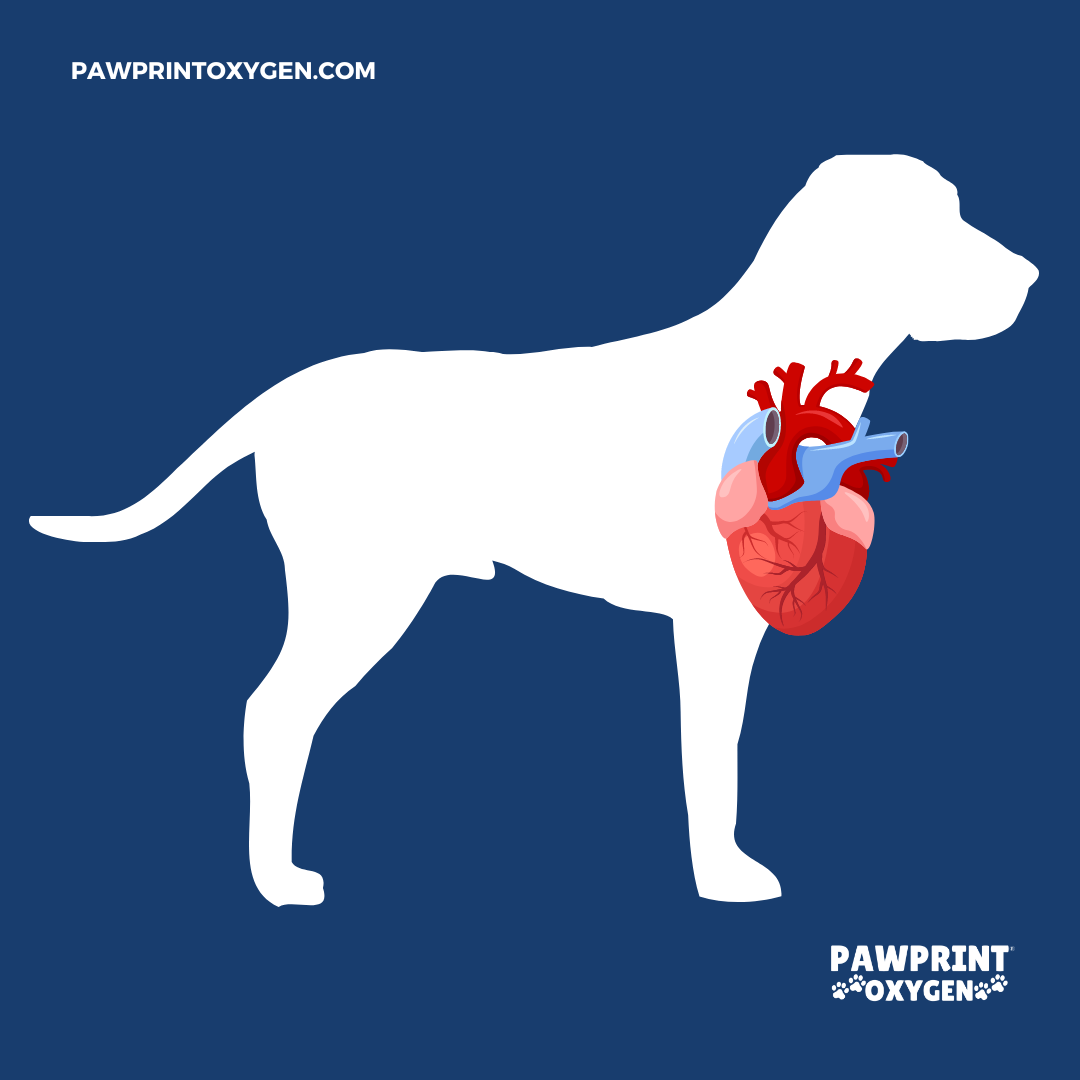What is Pulmonary Hypertension (PHT) in Pets?
Pulmonary hypertension is a condition that affects the blood pressure in the arteries and capillaries of the lungs. The blood pressure in the lungs is much higher than normal in pets that suffer from pulmonary hypertension. The terms hypertension and pulmonary hypertension are often confused. Hypertension refers to systemic hypertension, and is high blood pressure throughout the body, whereas pulmonary hypertension is strictly high blood pressure within the lungs.
Pulmonary hypertension is normally a secondary disease, meaning that it is the direct result of another disease the pet has. There are many diseases and conditions that may cause PHT in pets, ranging from pneumonia, chronic bronchitis, left-sided heart disease, obesity, heartworm disease, Cushing’s disease, immune-mediated diseases, pancreatitis, and others.
PHT is more prevalent in elderly animals, and is especially common in small breed dogs. The condition is relatively rare in large breed dogs and cats. Pulmonary hypertension affects more female animals than male.
Common Symptoms of PHT in Pets
Common symptoms of pulmonary hypertension in pets include:
- Exercise intolerance
- Labored or rapid breathing
- Coughing, sometimes with bloody spittle present
- Fainting
- Weight loss
- Abnormal lung sounds (crackles or wheezes)
- Heart murmur
- Cyanosis (when the tongue or gums turn blue or purple)
- Distended abdomen or fluid build-up in the limbs
- Prominent jugular veins in neck
Common Causes of Pulmonary Hypertension
Since PHT is typically a secondary disease, there are many causes of the condition. Some common causes of pulmonary hypertension are:
- Birth defects of the heart or lungs
- Coughing (dry or “honking”)
- Abnormal levels of the chemicals that regulate constriction or dilation of the blood vessels
- Fibrosis (scarring of the lung tissue) caused by pneumonia or chronic bronchitis
- Left-sided heart disease, which causes fluid build-up in the lungs
- Living at high altitudes
- Obesity
- Tumors or blood clots blocking the pulmonary artery
- Heartworm disease
- Cushing’s disease
- Bacteria in the blood
- Immune-mediated diseases in which the pet’s immune system targets their own tissues
- Pancreatitis
- Changes to the heart muscle itself
If there is no known cause, then the pet’s primary diagnosis would be idiopathic pulmonary hypertension, which advises that a cause of the increased blood pressure could not be found.
Abnormalities of the heart and lungs can lead to Pulmonary Hypertension.
How Changes to the Heart Muscle Can Lead To PHT
Changes to the heart muscle itself can also lead to pulmonary hypertension, as it disrupts normal blood flow into and out of the lungs. Unfortunatly, pet’s hearts can stiffen, englarge and change with age and is often not preventable. Some common changes to the heart that may lead to PHT are:
- Heart muscle may become stiff and not expand to fill with blood appropriately
- The walls of the heart may become thickened, which prevents the heart from filling and emptying normally
- The mitral valves of the heart may become narrowed, which causes increased back pressure into the lungs
- A tumor may form in the upper chambers of the heart
Diagnosing Pulmonary Hypertension in Your Pet
Diagnosing pulmonary hypertension relies on a number of diagnostic tests. Chest x-rays, blood work to test for clotting times and heartworm disease, and an echocardiogram are commonly used.
Seeking the care of a cardiologist or cardiopulmonologist is typically required for more advanced imaging and follow up, if your vet suspects pulmonary hypertension.
The signs and symptoms of pulmonary hypertension are almost identical to that of left-sided congestive heart failure, so an echocardiogram and chest x-rays are required to confirm a diagnosis.
If you notice that your pet is experiencing any of the common symptoms of PHT, seek veterinary care right away.
Common PHT Treatment Options
- Vasodilators – (e.g., sildenafil, tadalafil)
- Inodilators – (e.g., pimobendan)
- Bronchodilators – (e.g., albuterol)
- Supplemental oxygen – (e.g., Pawprint Oxygen Cat or Dog Oxygen Kits or Oxygen Cages)
- Diuretics – (e.g., Lasix)
Additional medications and treatments may also be needed if concurrent diseases are present with pulmonary hypertension.
Navigating a PHT diagnosis can be stressful for pet parents.
Over time, pulmonary hypertension can lead to reduced blood flow and oxygen delivery to the lungs, as well as increased pressure and stress to the right side of the heart. Unfortunately, changes to the heart and lungs can be permanent. Treatment typically focuses on keeping your pet comfortable rather than curing the disease. The prognosis for PHT is very guarded, mostly due to the changes that can occur in the blood vessels of the lungs. However, with early detection and a comprehensive treatment plan, a pet may remain comfortable with PHT.
If heartworm disease or a congenital cardiovascular shunt is the cause of pulmonary hypertension, once treatment or surgery are complete, there is a chance that the patient can be completely cured of PHT, and will go on to live a normal, healthy life.
Prognosis depends on what the cause of the condition is, so navigating this diagnosis can be stressful for pet parents.
Maintaining a Good Quality of Life for Your Pet
Maintaining a good quality of life for your pet is possible despite a pulmonary hypertension diagnosis. Regular vet visits, maintaining a stress-free home, restricting your pet’s activity levels and salt intake, and decreasing environmental triggers that may lead to breathing difficulties can all help reduce the risk of an emergency. Having supplemental oxygen on hand in case of respiratory distress and making sure your pet’s medications and treatments are given as directed will also ensure that your pet visits the ER as little as possible.
If your pet has been diagnosed with pulmonary hypertension, it is important to know that there are treatments available to aid in the quality of life for your pet after diagnosis. The most important thing is to help your pet maintain a comfortable quality of life, which means keeping them as stress-free and happy for as long as possible.




